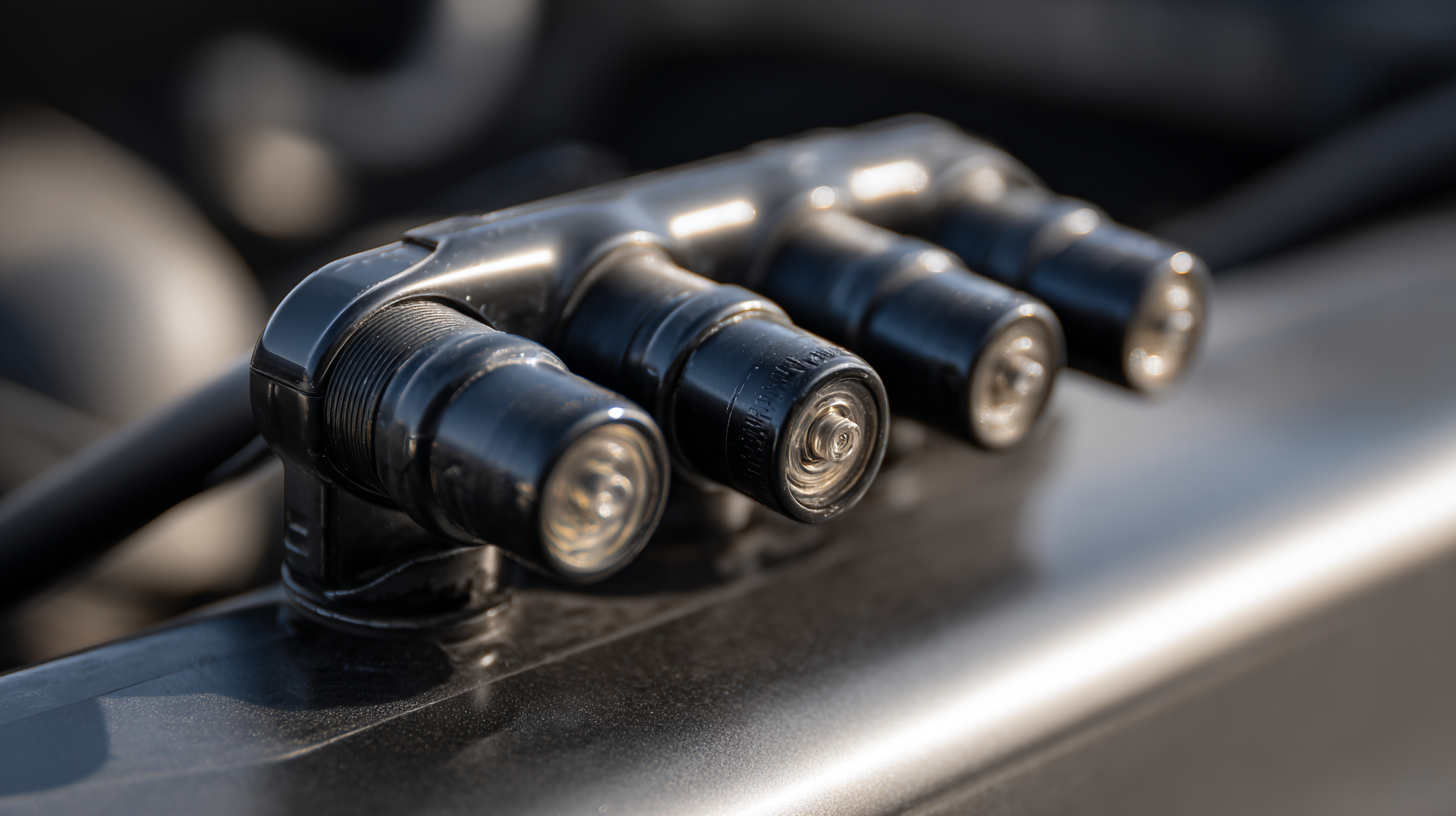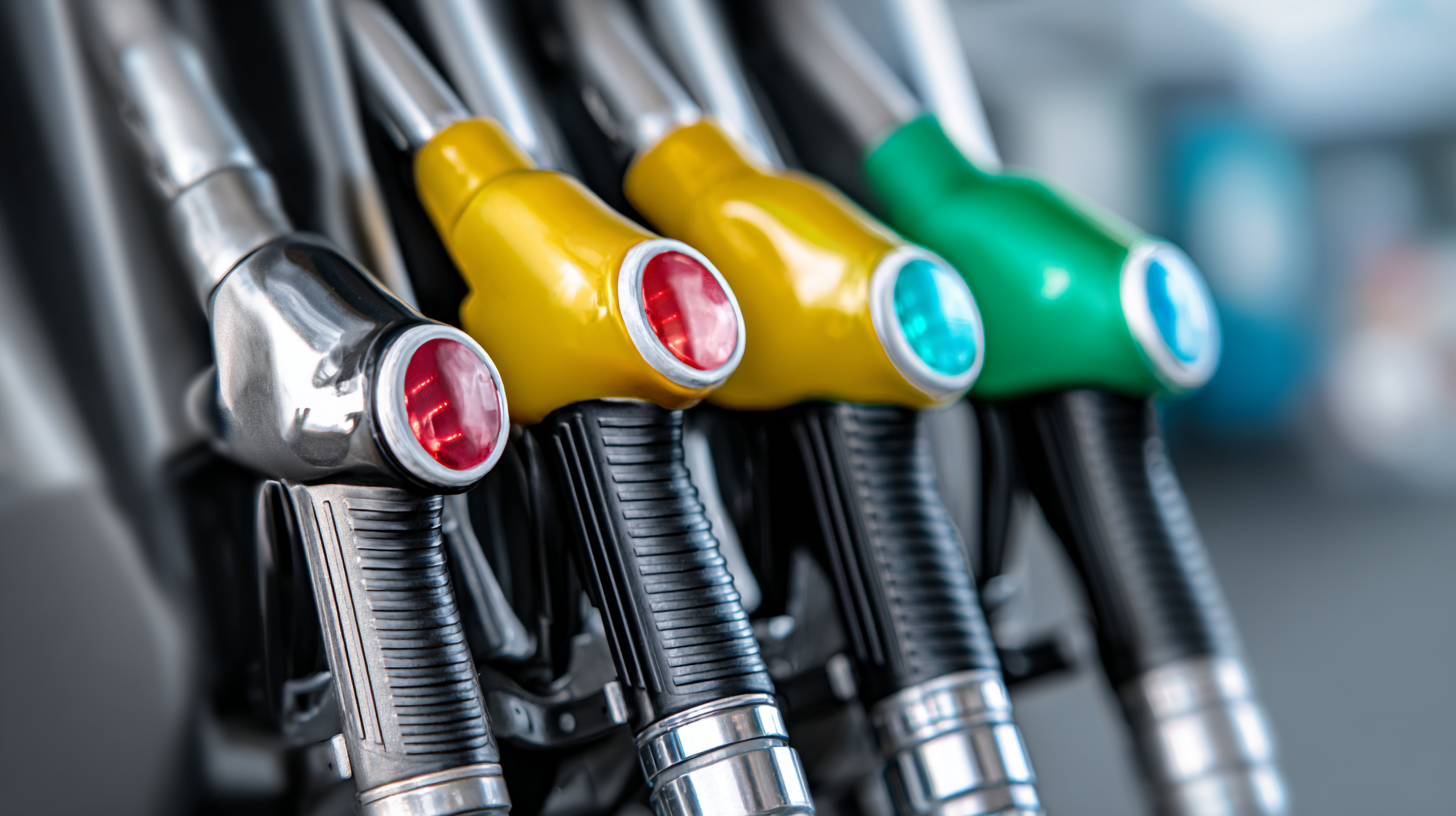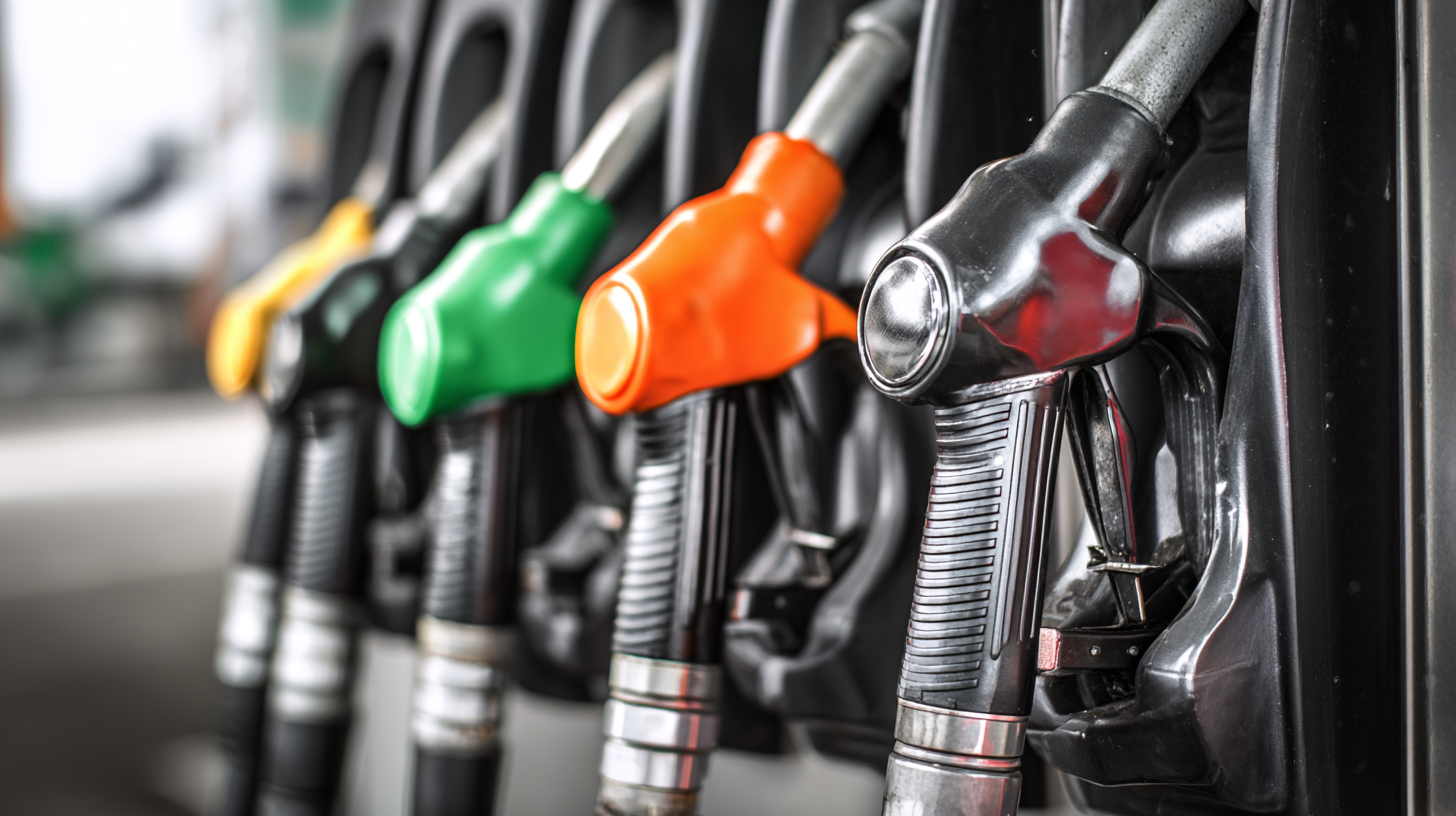Selecting the best fuel nozzles is a critical decision that directly impacts fuel efficiency and overall performance in various applications, particularly in the transportation and industrial sectors. According to a report by the U.S. Department of Energy, optimizing fuel usage can enhance performance by up to 25% in certain engines, highlighting the importance of efficient fueling systems. Fuel nozzles play a pivotal role in delivering the right amount of fuel at the correct pressure, and their design significantly affects vaporization and combustion efficiency.

Furthermore, changing regulations, such as the recent push for lower emissions outlined in the Environmental Protection Agency's guidelines, underscore the need for advanced nozzle technology. In this context, understanding the characteristics of fuel nozzles—including flow rates, nozzle types, and material compatibility—becomes essential for choosing the right products that not only meet performance standards but also align with emerging environmental policies.
Selecting the right fuel nozzle is crucial for maximizing fuel efficiency and ensuring optimal vehicle performance. Understanding the various types of fuel nozzles available in the market is essential for making an informed decision. Common types include automatic shut-off nozzles, which are designed to prevent fuel spillage and enhance safety; manual nozzles that allow for direct control over fuel flow; and nozzle designs specifically engineered for high-efficiency fuels. According to a report by the American Petroleum Institute, utilizing the correct nozzle type can lead to a 10% improvement in fuel efficiency, translating to significant cost savings over time.

Different applications require different nozzle designs. For instance, high-flow nozzles are suitable for larger vehicles or heavy equipment that demand higher fuel throughput, while low-flow nozzles cater to smaller engines and minimize fuel vapor emissions. In a study conducted by the Society of Automotive Engineers, it was found that utilizing fuel nozzles with optimized aerodynamic profiles can reduce drag and improve delivery speed, thus enhancing overall performance. By aligning the choice of nozzles with specific operational needs, users can achieve not only better fuel efficiency but also an increase in engine longevity and performance standards.
When selecting fuel nozzles, evaluating fuel efficiency metrics is crucial for optimizing performance. Key metrics include flow rate, spray pattern, and atomization quality. The flow rate, measured in gallons per minute (GPM), determines the amount of fuel delivered in a given time. A nozzle with an appropriate flow rate ensures that the engine receives sufficient fuel without causing wastage or underperformance. Thus, selecting a nozzle that aligns with the engine's specifications can lead to enhanced efficiency and engine longevity.
Another vital consideration is the spray pattern, which influences how efficiently fuel mixes with air for combustion. A fine atomization ensures better fuel and air mixing, leading to improved combustion efficiency. Additionally, examining the nozzle's construction material and design can provide insights into its durability and resistance to wear over time, which are essential for maintaining consistent performance. By combining these metrics—flow rate, spray pattern, and material quality—users can identify fuel nozzles that not only meet their engines’ requirements but also contribute to overall fuel economy and reduced emissions.
| Nozzle Type | Flow Rate (GPM) | Pressure Drop (PSI) | Fuel Efficiency Improvement (%) | Recommended Applications |
|---|---|---|---|---|
| Standard Nozzle | 10 | 5 | 0 | General Use |
| High Efficiency Nozzle | 8 | 3 | 10 | Performance Vehicles |
| Variable Flow Nozzle | 5-15 | 4 | 5 | Commercial Use |
| Low Flow Nozzle | 6 | 2 | 12 | Eco-Friendly Applications |
| Ultra High Efficiency Nozzle | 7 | 2 | 15 | Racing and Performance Engineering |
When selecting fuel nozzles for optimal fuel efficiency and performance, it's vital to focus on key features that directly impact functionality. High-performance fuel nozzles should exhibit precise fuel metering capabilities, ensuring that the correct amount of fuel is delivered to the engine, enhancing combustion efficiency. Additionally, the nozzle's design should allow for minimal flow restriction, as this can significantly influence fuel delivery rates, especially in high-demand scenarios. Features like a durable construction using corrosion-resistant materials can also extend the life of the nozzle, reduce maintenance costs, and ensure consistent performance over time.

Moreover, the market for high-performance fuel nozzles continues to grow alongside advancements in automotive technology. With the global high-performance computing market projected to reach $100.99 billion by 2032 at a compound annual growth rate of 9.2%, the demand for efficient fuel management systems is likely to rise. This growth accentuates the importance of selecting fuel nozzles that not only meet current performance standards but are also adaptable to future technologies for improved energy efficiency. As fuels evolve with industry standards, investing in high-quality, performance-oriented fuel nozzles can lead to substantial improvements in overall vehicle efficiency.
The design of fuel nozzles plays a crucial role in determining both dispensing speed and accuracy, which are essential factors for fuel efficiency and overall performance. A well-designed nozzle is engineered to optimize the flow of fuel, reducing turbulence and ensuring a smooth delivery. This design minimizes the risk of spills and fuel evaporation, thus maximizing the amount of usable fuel dispensed. Features such as automatic shutoff systems and anti-drip mechanisms further enhance the efficiency of fuel dispensing, making the process safer and more effective.
Incorporating advanced technologies into nozzle design can significantly improve accuracy during fuel transfer. Laser-cut or precision-machined orifices allow for a consistent flow rate, ensuring that consumers receive the exact amount of fuel they pay for. Additionally, nozzles with flexible spouts and ergonomic designs enhance user experience, allowing for easier handling and positioning during fueling. Overall, investing in high-quality fuel nozzles designed with these considerations in mind can lead to significant savings in fuel consumption and a more reliable fueling process.
Maintaining fuel nozzles is essential for ensuring their longevity and efficiency, which ultimately impacts vehicle performance and fuel economy. Industry reports, such as those published by the International Council on Clean Transportation, indicate that well-maintained fuel nozzles can improve fuel efficiency by up to 7%. Regular inspections can help identify wear and tear, which is critical as even minor degradation can lead to increased fuel consumption and emissions.
One key maintenance tip is to regularly clean the nozzles to prevent clogging. Deposits can form within the nozzle, affecting the fuel spray pattern and leading to inefficient combustion. Using a specialized fuel system cleaner can remove these deposits effectively and improve overall performance. Additionally, ensure that the fuel filter is replaced as per the manufacturer’s schedule, as a clogged filter can increase the burden on nozzles, reducing their lifespan.
It is also advisable to check the nozzle seals and gaskets periodically for any signs of damage or wear. According to the Society of Automotive Engineers (SAE), issues like improper sealing can lead to leaks and fuel wastage, ultimately decreasing efficiency. Taking these steps can help maintain optimal performance, ensuring your vehicle runs smoothly while maximizing fuel efficiency.






